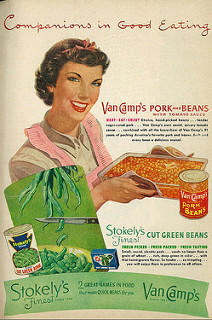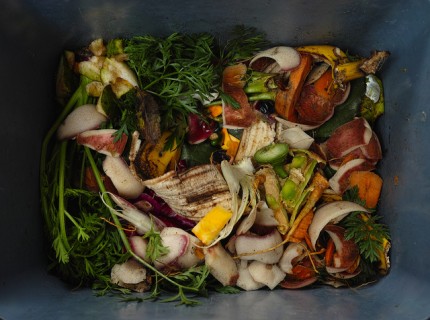Blog Series Part 3: Food Waste from the 1950s to the Present
Posted: October 19, 2016
Categories: GoodFoodBites / News from Sustain Ontario
Introduction: Why Food Waste?
Globally, around one third of all food produced is lost or wasted. Canadians currently waste $31 billion worth of food every year, with consumers responsible for almost 47% of the value. Why do we throw away so much food? It turns out that cultural practices, habits and institutionalized social norms play a big part in why we waste food.
This is third of a five-part series about food waste in which we explore how Canadians dealt (and deal) with food in the past, present and future.
Food Waste from the 1950’s to the Present
Although disposable products, processed foods and other modern amenities were introduced prior to the Second World War, it was the post-war boom that saw the accelerated growth of consumerism in North America. The purchase of of disposable goods became a sign of affluence. They were modern, conveniently priced, faster and easier to use. New cooking techniques involved baking with disposable aluminum pans, using paper towels and plastic wrap in the kitchen and plastic utensils on the table. Frozen and processed food also came in it’s own packaging that could easily be disposed of once the food was eaten.

Source: Classic Film via flickr
With this change in consumption habits came a lifestyle for women that liberated them from many domestic tasks. According to Waste and Want author Susan Strasser, purchasing disposable goods (along with the rise of modern appliances) gave women more time, reducing their obligation to maintain, sort, wash or file, and allowed them to begin moving from the domestic sphere to the professional, or at least save them from constant household drudgery. But disposable products and planned obsolescence, combined with municipally provided garbage pick up also meant that products could be conveniently thrown out without a second thought.
Although early environmentalist movements in the 1960s campaigned for a society that was more respectful of mother nature’s bounty and threw out less trash, it wasn’t until the 1980’s that recycling became common practice in many Canadian municipalities. In 1983 the first Canadian blue box program was implemented in Kitchener/Waterloo, with Mississauga following suit and many others after that. With rising concern about the amount of packaging sold and not reused (much of this used to wrap our foods), recycling became an act that was seen as not only responsible but also normative.
In the early 2000’s, Canadian municipalities with dense populations and little space for landfill looked for ways to divert materials. In parts of Toronto, resident residents were given “green bins” to deposit their kitchen waste. These materials have been processed using an anaerobic digester since 2002 via the “green bin” program. Not only does green bin pick up reduce waste in landfill, allowing these sites to prolong their capacity, but it also cuts down on destructive methane emissions that are produced when organic waste decomposes without oxygen.

Image courtesy of szczel via Flickr
Today, many municipalities are diverting green yard materials as well as kitchen waste from landfill. Some municipalities are encouraging on-site composting to reduce transportation costs and emissions. However, food waste remains problematic. Although yard materials take the prize for the bulkiest portion of the organics put to curbside, our food waste habits cost us the most. Green bins may successfully divert organic materials from landfill, but what about the waste that we can avoid creating in the first place? In the U.K., U.S. and parts of Canada, recent initiatives have begun to create awareness, promoting reduction before diversion by promoting tips and solutions for efficient meal planning, storing and preparation. So what’s next? How can we improve our food system to reduce the food waste that occurs, not only at home, but at each level of the production chain?
Stay tuned for the next chapter in this food waste blog series: The Food Waste Hierarchy
Missed our previous post on Food Waste in the Post-War Era? Check it out here.
Sources:
The History of Recycling in Ontario, Halton Region
New Green Bins Q&A for Etobicoke area Councillors, City of Toronto
Overview of the Green Bin, City of Toronto
Waste and Want: A Social History of Trash, Susan Strasser
One response to “Blog Series Part 3: Food Waste from the 1950s to the Present”
Leave a Reply
You must be logged in to post a comment.

[…] of all food produced globally is lost or wasted (Sustain Ontario). I read about landfills being full of rotting, wasted food, supermarkets rejecting “imperfect” […]